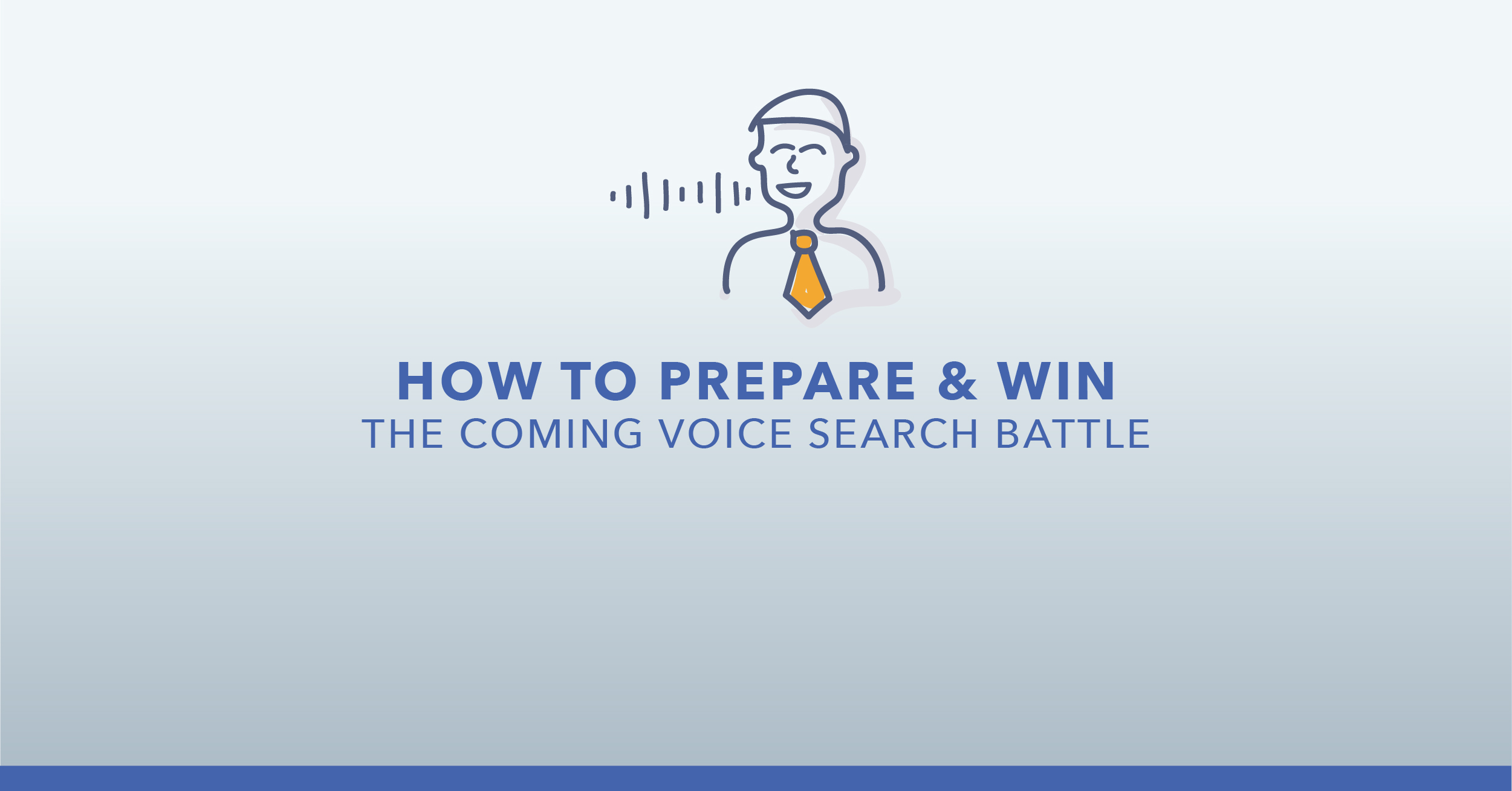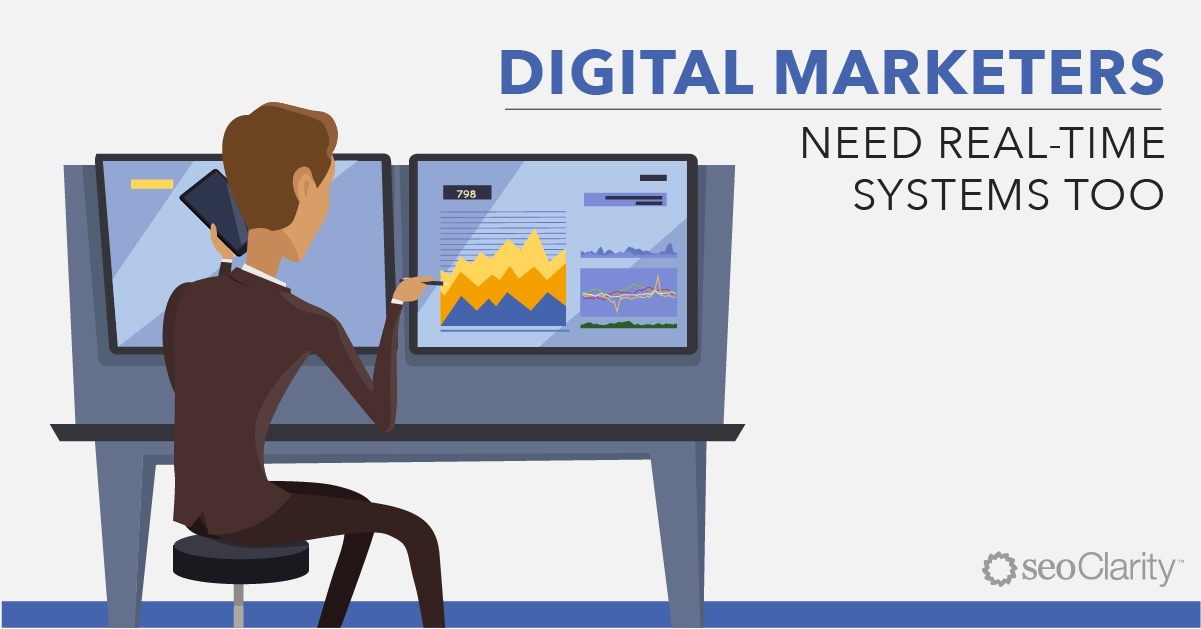The pace of change in the digital landscape is enough to make anyone's head spin. Just when you think you have the perfect formula of success, something new launches, changes or updates.
In the last two years alone, Google updated its algorithm 17 times (and that’s if you count only the major revisions), with certainly many more to come soon. Content has become the top-rated marketing strategy, with 89% adoption in B2B (and 63% overall satisfaction with the channel).
And then, there’s the AI (artificial intelligence) rapidly integrating into a new marketing channel. TacoBell, UPS, Staples and many other companies have already incorporated chatbots as another customer touch point, while Wynn Hotel plans to equip its rooms with Amazon Echo to allow guests to query Alexa for hotel or room information.
Given these examples, perhaps it comes as no surprise that, according to Digital Marketing Institute, 30% of marketers believe that in the next 30 years robots will do much of their tasks. We aren't here to offer some bleak futuristic vision of the future. Instead, I'll cover the impending major change in the way we approach marketing.
The shift to move from being reactive in our promotional strategies to proactively anticipate customers’ needs and expectations.
Let me explain.
Currently, most marketers react to changes AFTER they have happened. They take the time to analyze what happened and plan any new strategies that could counteract it or optimize for it.
But given the pace of technology change in the digital landscape, to remain competitive, we need to adapt strategies to changes as they happen. And in many instances, even try to predict them BEFORE they affect your customers’ behaviors.
How Voice Search Changes Our Approach to Content
(Note: I’ve posted a longer piece on the effect voice search will have on your online visibility and what you can do about it.)
Voice search has disrupted how we’re typically searching for information.
Traditionally, to find anything from the weather forecast, suggestions for the best place to eat out to advice on fixing that faulty home alarm, you’d have to use a search engine on a computer, smartphone, tablet. This also meant that we had to be close to the device, and physically use it to acquire the information.
Today, however, as many as 20% of mobile queries are conducted by voice search. And 40% of adults use voice search once per day.
The way we search changed too. When searching on a computer, we type specific keywords (“Italian restaurant,” for example). With Voice Search, however, we’re typically asking a direct question - “What’s the best Italian restaurant near me?”
For marketers, these changes mean we need to adapt content to the new ways customers find information:
- You need to anticipate your customers' questions and answer them in a way that is helpful to your customer. And consider how you build your content to be featured in the Answer Box (at least for now, it's the primary source of voice search answers).
- Incorporate more semantic keywords, to boost relevance to more search queries.
Tools like seoClarity’s Content Ideas give you access to real questions customers ask in relation to your product category. seoClarity is the only platform to integrate and provide insights from the largest database of Answer Box results which allows you to track yours and your competitor’s performance in the Answer Box.
How Machine Learning Applies in Marketing
Do you consider how machine learning technologies can benefit your day-to-day work? It's a hard concept to grasp let alone know how to leverage it to make you work smarter and faster. Even this forces us to change the way we create content.
Out of many definitions of machine learning, the one from the guys at Coursera stuck with me the most:
“Machine learning is the science of getting computers to act without being explicitly programmed.”
Simply put, machine learning gives computers the ability to make a decision, based on the available data. And learn from it, to improve its future choices. Although this concept may seem futuristic, we already experience machine learning. For quite sometime, every day, in fact, we do interact in the form of Google’s RankBrain.
Rankbrain is the Google’s artificial intelligence system using machine learning to help process search results, particularly those that relate queries the search engine has never seen before. RankBrain analyses and uncovers the meaning behind potentially unrelated phrases. And then, matches a search query to relevant pages, even if they don't include the said phrase.
But because of that, RankBrain forces webmasters to create more relevant content that targets specific problems their audiences experience.
Using tools like seoClarity's Content Ideas allows you to quickly identify the most pressing issues your audience needs answered, and provide content that delivers precise and highly-relevant results.
How to Master the Evolving SERPs
The SERPs have changed in the last couple of years. A lot. So how do you stay current in the ever-evolving SERP? It requires an proactive approach.
What started as ten blue links, today incorporates so many other, local map pack, universal rank types like ads, videos, PLAs, images, answer boxes, AMPs, local and shopping results…. The list goes on and on.
And what’s more, many of these change on a daily basis - from shifts in rankings, to whose content appears in the Answer Box. Given the sheer number of available rank types, and how quickly Google’s algorithm changes these results, reacting weekly to any shifts in your overall search visibility is likely too slow. Today, you need to know what strategies work and which ones produce results on a daily, even a real-time basis in order to optimize and connect with your customers in those moments that matter.
Evolve Your Strategies in an Ever-Evolving Digital Space
The pace of change in the digital landscape is astonishing. But apart from developing technology, those changes bring about a need for a major shift in the approach to our marketing, from merely reacting to events after they’ve occurred to actively anticipating customer’s needs and behaviors. And acting on them even before they even take place.
seoClarity is focused to be on the forefront of this because of the challenges and opportunities marketers have to stay ahead of this shift in marketing. We've created Clarity Grid, truly the first to offer the industry's fastest, most scalable technology ever applied in SEO. This technology empowers you to take action on the right actions to connect with your customers – with the right insights to create amazing content, deliver the best site experience, and compete smarter against your competition.






1 Comment
Click here to read/write comments